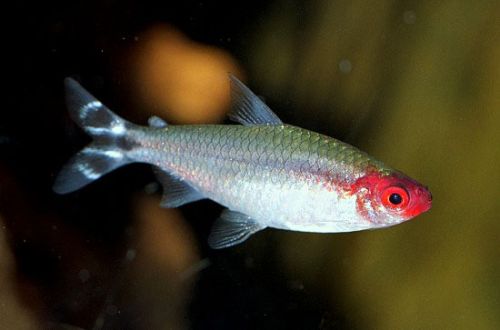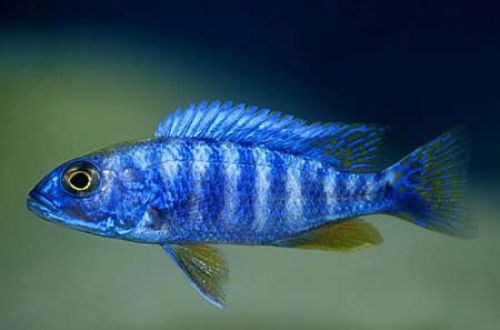
Notobranchius Eggers
Nothobranchius Eggers, scientific name Nothobranchius eggersi, belongs to the family Nothobranchiidae. A seasonal fish whose life expectancy in nature is only one year. In this short period, she manages to be born, give a new life and die. All this amazing history of a single fish fits between drought seasons in what is now eastern Tanzania.

Habitat
It comes from the African continent from the eastern coast of the subequatorial belt, territorially the state of Tanzania is located there. Inhabits flat terrain in swampy floodplains. This area is characterized by a division into wet and dry seasons, in the latter there is a periodic drying up of shallow water bodies. During this period, the fish die, but manage to lay eggs that survive in the dried substrate of the former reservoir and come to life with the arrival of rains.
Description
Miniature fish with large wide fins, the dorsal and anal are shifted closer to the tail, which creates a kind of fan. The main thing that attracts attention is the coloring. On sale for home aquariums there are several varieties labeled as “red” or “blue”. These two primary colors are certainly present in the color of the fish with the predominance of one of them. It has a close relative, another one-year-old species that lives in similar natural conditions – Notobranchius Rakhov.
Professional breeders strive to preserve the uniqueness of each variety found in nature, so for commercial collections, the division is much more complex and is not limited to two shades. For example, there are designations “TAN 05–43 Kigongo”, which means TAN – Tanzania, 05 – collection year 2005, 43 Kigongo – area code. If you see a similar code, then you have before you the descendants of those fish that were caught in a particular area in the specified year and with them you can only keep those varieties that have a similar or similar code, with the exception of the year of collection, since fish could be caught from this place and later.
Food
In the natural environment, they are considered small predators that feed on insects and aquatic crustaceans. The diet at home should also consist mainly of a protein diet. You can serve live or frozen food in the form of daphnia, brine shrimp, small bloodworms, etc. Dry food is used only as supplements. Feed 2-3 times a day in the amount eaten in 5 minutes, the remnants of the meal should be removed.
Maintenance and care
The conditions of detention are quite simple. These small fish will thrive in a tank of 50 liters or more (this applies to a pair of fish), decorated with groups of rooting and floating plants, arranged in such a way that there is free space for swimming.
The set of equipment includes a filtration, lighting, heating and aeration system. The fish come from calm stagnant waters, so the internal current is not welcome, its main source in the aquarium is the filter, so make sure that the flows of water coming out of it are scattered about some kind of obstacle (glass, large stone or snag).
The composition of the water is predominantly of medium hardness or hard with a slightly alkaline pH. More about pH and dGH parameters in the section “Hydrochemical composition of water”. Weekly maintenance is reduced to replacing part of the water (10–15% of the volume) with fresh water, periodically cleaning the glass and soil from organic residues.
Behavior and Compatibility
The transience of the life cycle implies constant work on the reproduction of the population, therefore, joint long-term maintenance with other species is extremely problematic. Notobranchius Eggers is kept in a species aquarium.
Breeding / breeding
Spawning is carried out in a separate container, where peat or coconut fiber-based filler is used as soil, where the female lays eggs. The set of equipment includes a heater and a lighting system, the rest is redundant.
Adult fish are placed in a spawning aquarium and the temperature is gradually increased above 24°C and the water level is lowered, simulating the beginning of the dry season, this stimulates the start of the mating season. When the female lays eggs, and the male fertilizes it, the fish are placed back into the common aquarium, but not immediately, but with the temperature equalizing. Returning to the previous conditions often increases life expectancy.
Water is drained from the spawning aquarium, the substrate with eggs is taken out and left in a dark, warm, but dry place at a temperature of 21–25 ° C for several months (3–4). Then the substrate is again immersed in water and after a while fry appear. They grow very quickly and soon they can be placed in a community aquarium.
It is worth noting that after each cycle it is necessary to change males or females (purchase new ones) in order to dilute the genetic material. Constant crossing between close relatives from the same brood will lead to the degeneration of the species.





